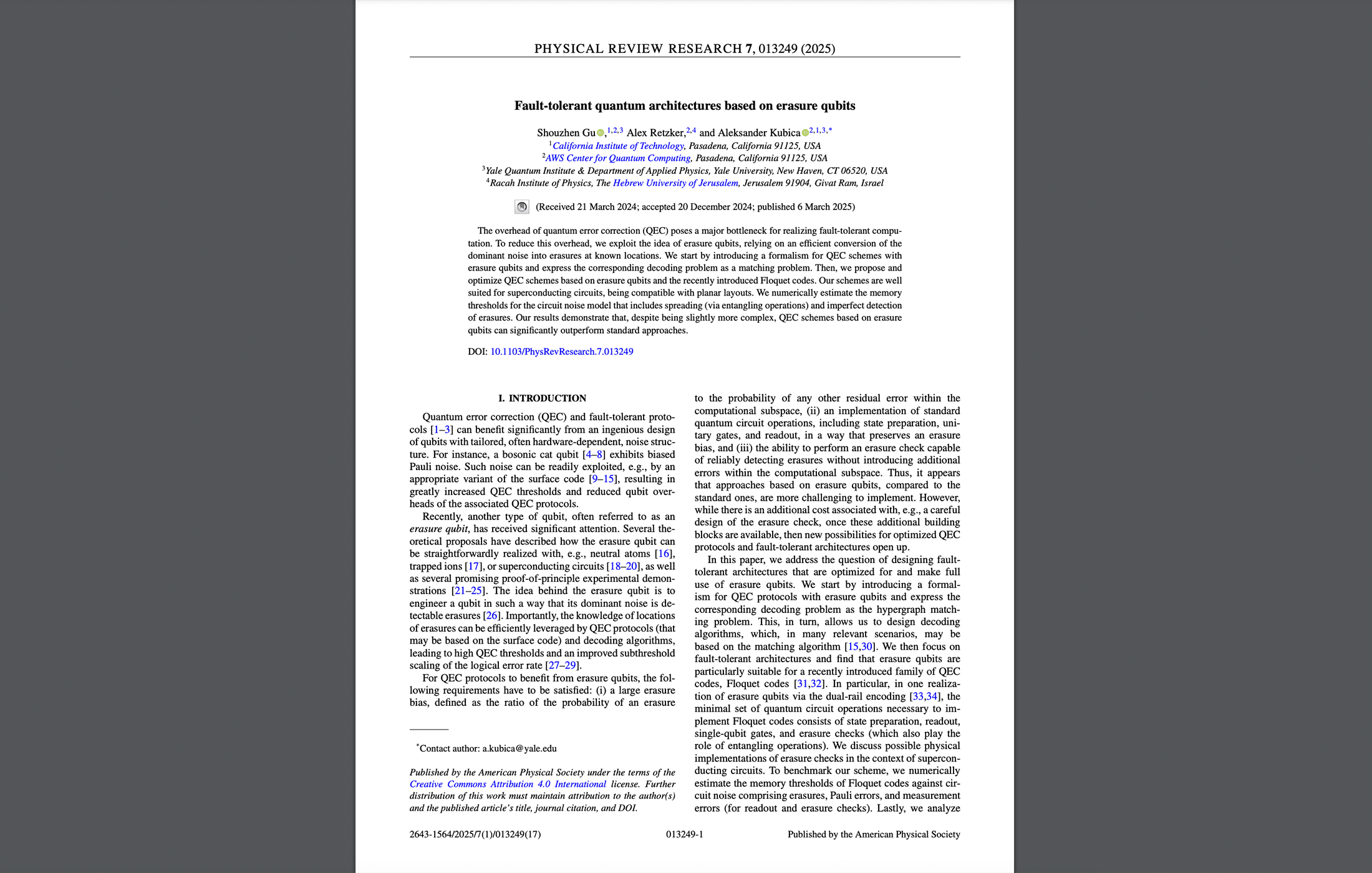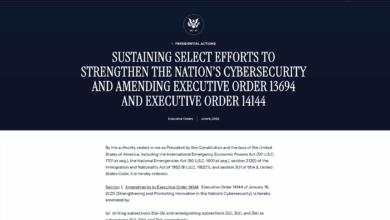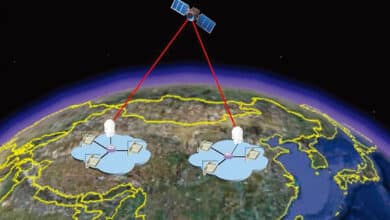Fault-Tolerant Quantum Computing (FTQC) with Erasure Qubits

Table of Contents
The steady flow of interesting quantum computing announcements continues today, with an intriguing new paper. Researchers have unveiled a novel quantum computing architecture that uses “erasure qubits” to dramatically improve error correction, potentially cutting the cost of building reliable quantum computers. In a new study, Shouzhen Gu, Alex Retzker, and Aleksander Kubica propose a hardware-efficient way to make quantum bits that can signal when they fail, turning random errors into easier-to-handle erasures. This approach addresses one of quantum computing’s biggest challenges – the huge overhead of error correction – by allowing the system to know exactly where an error occurred and correct it more efficiently. The team’s fault-tolerant architecture, tailored for superconducting quantum circuits, shows that with a bit more complexity in each qubit, one can achieve significantly better error protection than standard methods. The result is a blueprint for quantum processors that could require far fewer qubits to do the same reliable computations, bringing practical quantum machines closer to reality.
What Are Erasure Qubits and Why Do They Matter?
In conventional quantum bits (qubits), errors like bit-flips or phase-flips strike without warning – the qubit’s state might change silently, and detecting these errors requires intricate protocols. An erasure qubit is different. It’s engineered so that its most likely failure mode is a detectable erasure – essentially the qubit disappears or moves to a known “lost” state that raises a red flag. In other words, when an erasure qubit suffers an error, you know it happened and which qubit was hit, as opposed to mysterious flips that go unnoticed. This built-in error detection is powerful because it converts unpredictable errors into predictable, locatable ones. If a quantum computer is made up of qubits that only fail by erasing themselves (and announcing it), error correction becomes much easier – the system doesn’t have to guess where the error is. As the researchers note, knowing the locations of erasures lets quantum error-correcting codes fix errors more efficiently, leading to higher error thresholds and lower failure rates than traditional qubits could achieve. Previous theoretical proposals and experiments have already explored erasure qubits in various forms (with neutral atoms, ions, and superconducting devices) and shown the promise of this idea. The key novelty in the study published yesterday is integrating erasure qubits into a full fault-tolerant quantum computing architecture – not just one qubit, but an entire scheme for computation that takes advantage of these easier-to-correct errors.
How Erasure Qubits Improve Quantum Error Correction
Quantum error correction (QEC) normally requires encoding a single logical qubit into many physical qubits (often dozens or more) to survive the onslaught of errors. The overhead can be enormous – on the order of 1000 physical qubits per logical qubit in some approaches. The goal of Gu et al.’s work is to shrink that overhead by making errors less damaging. With erasure qubits, every time a qubit fails, it essentially shouts “I’ve dropped out!” This extra information changes the error correction game. The team developed a formal QEC framework where such erasures are explicitly tracked and fed into the decoder (the algorithm deciding how to correct errors). They show that the decoding problem can be expressed as a hypergraph matching problem, which is a well-studied, efficient method for error correction. In simple terms, because the error locations are known, the code only needs to figure out how to correct the type of error, significantly simplifying the computation needed to recover from errors.
Crucially, the researchers satisfy the tough requirements for making erasure-based QEC work: the qubit’s noise is extremely biased toward erasures over any undetectable errors, and the usual operations (gates, measurements) can be done in a way that preserves this bias. They introduce an “erasure check” operation – a procedure to check if a qubit has fallen out of its computational state space – that can reliably flag erasures without introducing too many other errors. This does add some complexity (additional circuitry and steps to perform these checks), but it pays off by catching the dominant errors. Once those building blocks are in place, new possibilities open up for optimized QEC protocols that wouldn’t be effective on standard qubits. The study specifically demonstrates this by designing a fault-tolerant protocol using a recently developed family of quantum codes known as Floquet codes.
The Proposed Fault-Tolerant Architecture (Using Floquet Codes)
Floquet codes are a type of quantum error-correcting code where the set of measured stabilizers (error checks) changes in a cycle – a dynamic error correction scheme that doesn’t require all checks at once. They were chosen here because they are compatible with low connectivity (only requiring nearest-neighbor two-qubit operations) and can be laid out in a plane, which is ideal for microchip architectures. Gu and colleagues found that erasure qubits and Floquet codes make a great pair. In their design, each physical erasure qubit is actually a small subsystem composed of multiple components: for example, one convenient realization is a dual-rail qubit, which uses two physical qubits (like two superconducting transmon circuits) to encode a single logical bit of information. The logical “0” and “1” states can be represented as one photon in the first transmon or one photon in the second transmon (shared between the two). If an amplitude-damping error (energy loss) occurs – the kind of error where a transmon loses its excitation – the dual-rail encoding turns that into a known erasure: the photon is gone from both, leaving the joint state |00⟩ which lies outside the valid code space and is instantly recognizable as an error. As long as the system can check whether the photon is still there (i.e. perform an erasure check to see if the state has leaked to |00⟩), it can flag a qubit as erased the moment a loss happens.
The paper proposes a concrete way to implement these erasure checks and the necessary quantum gates in a planar superconducting circuit. In the dual-rail transmon example, an additional ancilla circuit is used as a detector: effectively a third transmon (or an LC resonator element) that couples to the two data transmons and measures a joint property of them. This ancilla can perform a parity measurement on the two qubits – e.g. measuring a two-qubit Pauli ZZ operator – which tells whether the dual-rail pair is in the code space (one photon across the two) or has both qubits in |0⟩ (no photon). A “+1” outcome from this measurement indicates the qubit has leaked to |00⟩, signaling an erasure event. Conversely, measuring ZZ between different dual-rail qubits (one half of each) gives the normal parity check used in the error-correcting code (to detect more subtle errors). With these erasure checks and standard single-qubit gates in the computational subspace, the authors show that one can execute the full cycle of a Floquet code on a network of erasure qubits. Importantly, all of this can be done in a tileable, planar layout suitable for existing chip fabrication – the design uses nearest-neighbor coupling and elements like capacitors/inductors that can be printed on a flat chip. In short, the study presents a blueprint for a quantum processor where each qubit has an internal “alarm system”, and these qubits are woven into an error-correcting code (the Floquet code) that takes full advantage of those alarms.
To gauge the benefits, the researchers ran numerical simulations of a quantum memory using this architecture under realistic error conditions. They considered a circuit-level noise model that included erasures (with some probability per operation), ordinary Pauli errors (the undetected flips) at lower rates, and even the possibility of imperfect erasure detection (false alarms or missed erasures). By simulating logical qubits of increasing size (distance) and comparing error rates, they could estimate the fault-tolerance threshold – the error rate below which increasing the code size exponentially suppresses logical errors. The erasure-based schemes proved to have a significantly higher threshold and better error suppression than comparable non-erasure (standard) schemes. In fact, even when accounting for a few percent rate of detection mistakes and cross-coupling errors, the erasure architecture could tolerate error rates comparable to those observed in recent experiments (for example, around 0.4% erasure rate and 0.01% ordinary error per gate in one realistic scenario). This means that, despite the added circuit complexity, erasure qubits allowed the system to handle noise levels that would overwhelm a traditional quantum code, indicating a clear path to reduce the hardware overhead needed for quantum error correction.
Impact on Quantum Computing
This research marks an important step forward in the quest for practical, fault-tolerant quantum computers. By showing that qubits can be designed to fail “gracefully” (with errors that are flagged rather than sneaky), it opens the door to quantum processors that need far fewer redundant qubits to achieve reliable operation. A major barrier in quantum computing has been the astronomical qubit counts required by standard error correction; for example, the surface code might need thousands of physical qubits per logical qubit to handle today’s physical error rates. Erasure qubits attack this problem at the hardware level, converting the dominant error (energy relaxation, in superconducting qubits) into something the software can readily correct. The result is a higher error threshold – the system can tolerate a larger fraction of noise before failing – and a better scaling of error suppression below that threshold. In practice, this means that a given quantum algorithm could be run with fewer qubits and gate cycles if those qubits are of the erasure type, because the error correction code doesn’t have to work as hard to diagnose errors. The study’s simulations showed that even with a slightly more complex qubit design, the net qubit overhead for the whole computer would be lower, since each erasure qubit contributes more to maintaining fidelity than a standard qubit.
Another impact is on the feasibility of early fault-tolerant demonstrations. Companies like AWS (where part of the team is based) and others are actively looking for “hardware-efficient” error correction approaches. This work provides a concrete architecture that could be tested on superconducting quantum processors in the near term. In fact, a recent experimental demonstration already realized a dual-rail erasure qubit in a transmon device and maintained very high coherence, hinting that these ideas are within reach of current technology. The ability to detect erasures in real time was shown, and the next steps involve using such qubits to perform logic gates and integrate them into small error-correcting codes. With the theoretical blueprint provided by Gu et al., researchers now have a roadmap for scaling those single-qubit demonstrations into a multi-qubit, fault-tolerant array. If successful, we could see a prototype of a logical qubit (a qubit corrected against errors) with substantially lower hardware overhead than previously thought possible. In the long run, this approach could accelerate the timeline for achieving scalable quantum computers of “practical utility,” as the AWS team suggests. By reducing the resource requirements, it also potentially lowers the cost and complexity of quantum hardware, making it easier to build larger machines.
Cybersecurity Implications
Improvements in quantum error correction and fault tolerance have a direct, albeit double-edged, connection to cybersecurity. On one hand, a fully fault-tolerant quantum computer is something of a holy grail – it would be capable of running Shor’s algorithm and other attacks on modern cryptographic protocols to completion. Fault-tolerant quantum machines will be capable of cracking many common encryption systems (like RSA) once they have enough scale. Every advance in fault tolerance – such as boosting error thresholds or reducing qubit overhead, as erasure qubits do – brings us a step closer to that reality. While the devices demonstrated in this research are still small (a few qubits) and the path to cracking RSA-sized problems requires thousands of logical qubits, the significance is that we are steadily chipping away at the technological barriers. The moment quantum computers achieve true fault tolerance is expected to be a tipping point for security: organizations will face an “immediate and existential” threat to their classical encryption. Studies like this one, which hasten the arrival of reliable quantum computing, underscore the urgency for the cybersecurity world to adopt post-quantum cryptography. In fact, analysts predict that the demand for quantum-resistant encryption will spike as soon as it’s clear that fault-tolerant quantum computing is feasible. In short, erasure qubits themselves don’t break encryption – but by enabling more robust quantum computers, they inch us closer to the day when current cryptographic codes could be broken if not upgraded.
On the other hand, erasure qubits could also have positive implications for secure quantum technologies. Quantum cryptography protocols (like quantum key distribution, QKD) often deal with erasures naturally – for example, lost photons in a fiber are treated as erasure errors. A qubit that signals its loss could be useful in quantum networks or repeaters, where detecting a failed transmission is crucial. More robust, fault-tolerant quantum hardware might allow secure quantum communication over longer distances or enable new cryptographic protocols that rely on quantum processors. Additionally, the techniques developed for erasure error correction might translate into better error mitigation in quantum random number generators or other security devices. These are more speculative benefits, but they illustrate that advances in quantum computing hardware don’t only pose risks; they can also bolster certain security technologies. Overall, the cybersecurity takeaway is clear: as quantum hardware improves via innovations like erasure qubits, the race between quantum capabilities and cryptographic defenses will intensify. It’s a timely reminder for governments and companies to continue accelerating their transition to post-quantum encryption in parallel with these technological advances.
Potential Future Directions
While the study demonstrates a compelling blueprint, further research and development will be needed to bring erasure-based quantum architectures into practical use. One immediate direction is integrating these ideas with other leading error-correction codes beyond the Floquet code. The authors note that they focused on Floquet codes for its compatibility with planar layouts, but in principle the erasure qubit approach could benefit popular codes like the surface code or even more efficient quantum LDPC codes. The surface code, for instance, also works with planar nearest-neighbor qubits and could be a natural fit for an erasure-biased noise model. Adapting the decoding algorithms and check circuits of such codes to take advantage of erasures is a promising avenue – it could combine the high thresholds of erasure qubits with the well-understood frameworks of existing codes. On the flip side, certain advanced codes (like some LDPC codes) are not inherently planar, so implementing them with erasure qubits might require more creative hardware layouts or is less straightforward. Research in that direction could expand the applicability of erasure qubits to a wider range of quantum computing architectures.
Another important future task is refining the hardware and error detection mechanisms. In the current schemes, each erasure qubit requires extra elements (like an ancilla or a coupling resonator) to check for erasures, and these checks themselves can occasionally malfunction (false positives or negatives). Continued engineering effort will aim to reduce the error introduced by the checking process – for example, making the erasure detection extremely reliable so that it very rarely misses an erasure or flags one that didn’t happen. The recent experimental erasure-qubit device achieved around 1% false alarm and miss rates; improving this further will directly translate to better performance. Moreover, researchers will explore when and how often to perform erasure checks in a larger quantum circuit. The current study considered frequent checks (even after every operation in one scheme) to maximize knowledge of errors, but doing so also incurs a time and complexity overhead. Future protocols might optimize this by, say, performing erasure checks only periodically or adaptively – balancing timely error detection with the operational overhead. Indeed, the authors suggest that less frequent checks (and using conditional resets only when an erasure is detected, rather than resetting unconditionally each time) could reduce overhead while still reaping the benefits of flagged errors. Determining the optimal schedule for erasure checks in a real quantum processor will be an important practical consideration.
We can also expect further demonstrations of logical operations using erasure qubits. So far, a single erasure qubit has been shown to have long coherence and predominantly erasure errors. The next milestone will be executing multi-qubit gates and showing that a small cluster of erasure qubits can perform an error-corrected logical operation without failing. This will involve ensuring that two-qubit gates between erasure qubits preserve the erasure bias – a non-trivial requirement, since entangling operations could in principle spread errors. Techniques to maintain the integrity of the erasure property during gates (for instance, by designing gates that if they fail, fail in a detectable way) will be a subject of investigation. If successful, one could envision a prototype fault-tolerant module: e.g., a handful of dual-rail qubits and ancillas demonstrating a logical qubit with error rates below what any single physical qubit could achieve. Such an experiment would be a landmark toward scalable quantum computing.
Finally, exploring erasure qubits in different physical platforms will broaden their impact. While superconducting circuits are a focus (because they are a leading platform and have a clear noise bias that can be exploited), erasure error conversion has also been proposed in atomic systems and photonic qubits. Neutral atoms and trapped ions, for example, can use certain levels or states as an erasure flag, and recent work showed erasure conversion in Rydberg atom arrays with high fidelity. Superconducting cavities have also been used to encode erasure qubits in bosonic modes. Each platform comes with its own challenges and advantages, so a future direction is to determine which systems can best leverage the erasure approach. It’s conceivable that hybrid systems – say, superconducting qubits for processing plus optical links that convert errors to erasures during transmission – could form a part of quantum networks or distributed quantum computing.



